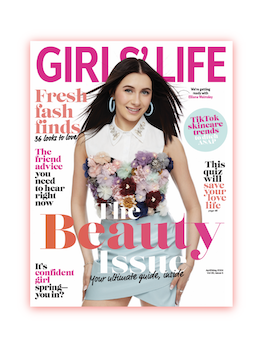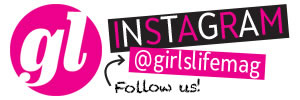STYLE
Fashion
Personal color analysis is a thing...prepare to be *obsessed*
You've likely seen these vids from your fave style influencers pop up in your YouTube recommendations—vlogs with titles like "I got a personal color analysis by a PRO!" or "I spent HOW MUCH on a color matching session!?". But before you write off this content as total clickbait, you've got to admit how much color really matters in the world of fashion.
Think about it: It's no coincidence that you get a million compliments every time you wear that peachy pink lip gloss. On the other hand, there's a reason you had to ditch that blinding, highlighter-yellow hoodie even though it was suuuper soft. Color analysis tries to uncover the mystery behind complementary colors. Why do some hues look so much better on us than others? Which shades should you gravitate towards, and why?
It's time to take the guesswork out of finding your trademark shade of blush or determining once and for all if you're a gold or silver (or rose gold!) girl. Whether your color is a bold magenta or an earthy olive, understanding which hues flatter you can be an *essential* step in leveling up your style game.
What is personal color analysis, anyway?
Want to look happier and brighter? Who doesn't! Color analysis is a practice that identifies which colors and metallics look the best on you and highlight your natural beauty. These shades, your harmonious colors, are determined based on your skin color, your hair color and your eye color.
By taking into account things like value, saturation and hue, color analysis can help you do everything from reorganizing your closet (warm colors to the front, please!) to nailing down your signature foundation shade.
How does it work?
Professional color analysis can take place virtually or in person. Some color specialists have people send them face pics to work off of, while others prefer to do a color analysis face-to-face by sitting their clients down IRL.
When searching for someone's personal color matches, many experts start by creating the most neutral background possible. The person receiving their color analysis is usually asked to remove their makeup, surround themselves with soft natural light (i.e. seat themselves in front of a window), and dress in all white. This creates a "blank canvas" that allows the professional to easily see—at a glance—which colors are most flattering and which colors are so not the ~vibe~.
Then, it's time to analyze! First, a color expert may drape different colored fabrics around someone's neck and shoulders and observe their impact. Does a bright blue bring out that person's sparkly eyes or accentuate their dark circles? Does a soft yellow wash out their skin tone or add a little radiance and sunshine?
Then, through a process of elimination, experts can narrow down the options to find a person's most complementary colors. It's common for these palettes to correspond with the four seasons. A "winter", for example, might look best in rich, jewel tones while "spring" gals might be encouraged to go for pastels.
Although most color analysis follows these simple steps, there are tons of different approaches. Some technicians base their picks on a client's personality while others strictly break things down by season. Color matching is a real art, and different professionals have their own unique strategies!
Can I find my *perfect* color match at home?
Tbh, most of us don't have the extra funds to pay a professional for a full color analysis. Online quizzes or style blogs are valuable tools, especially when you're figuring out what seasonal palette suits you best.
There's also a useful TikTok filter (see below!) that can guide you in the right direction. It displays a whole wheel of various colors around your face and can show you which ones brighten up your skin and eyes.
@stylingbypriest It can take some time to train your eye to see the differences and some people are more obvious than others. Good luck! #colorseason #stylingbypriest ♬ original sound - Priest
Still feeling a little lost? Maybe you just glow in every color, bby. Either way, here's our unofficial cheat sheet, outlining some of the most common features of each seasonal "type". There are always exceptions to these rules, so don't sweat it if they don't feel 100% applicable to your unique skin/eyes/hair combo, but they can be a helpful starting point in discovering which seasonal palette might be your go-to.
Summer: Summers usually have neutral undertones to their skin—not entirely warm, but not entirely cool either (i.e. they can rock sooo many different shades of lipstick!). Medium to dark-colored hair is common for Winters, as well as eye colors that aren't strikingly bright but feel softer and more muted.
Celeb example: Zendaya
Spring: The spring palette is usually most flatttering for those with copper, strawberry blonde or light brown hair. Springs have rosy skin, often with pink or peachy undertones (although some warmer Springs may also have beige or bronzed-looking skin). They might have anything from blue to green to light brown eyes.
Celeb example: T-Swift
Fall: Fall girlies typically have hints of auburn or gold in their hair (often with a bit of shine to it!), rich brown, green or hazel eyes and skin with warm or deep undertones.
Celeb example: Olivia Rodrigo
Winter: Winters commonly have ashy blonde, bluish black or dark brown hair, either dark-colored or gray-tinged eyes and skin with cool undertones (which could be more olive or more blue).
Celeb example: Alexis Bledel
Now, all that's left to do is to shop your own closet for your ideal colors! You may have been sleeping on garments that have the potential to be ultra-flattering. That deep purple tank you stashed in a drawer somewhere? That coral sundress you forgot you were gifted for your birthday last year? Break out those pieces again and get them back in your regular outfit rotation ASAP. Personal color analysis might renew your interest in colors that you may not have been drawn to before (and these could be the exact hues that end up doing wonders to enhance your natural features).
The most important thing to remember is that these personal color matches should be used as a fun and flexible guiding tool—not as the firm and final ruling on what you *can* and *can't* wear. Newsflash: just like you don't need to limit yourself to one particular aesthetic when it comes to your wardrobe, you don't need to follow one specific color scheme either. It doesn't take an expert to know that you can rock any color of the rainbow, any day of the week.
Which color do you think is your ~personalized~ perfect match?
Snap a pic and share with us on Instagram @girlslifemag!
Slider image: @theoutfitcurator
All GIFs via Giphy

 become a contributor
become a contributor















.png)




